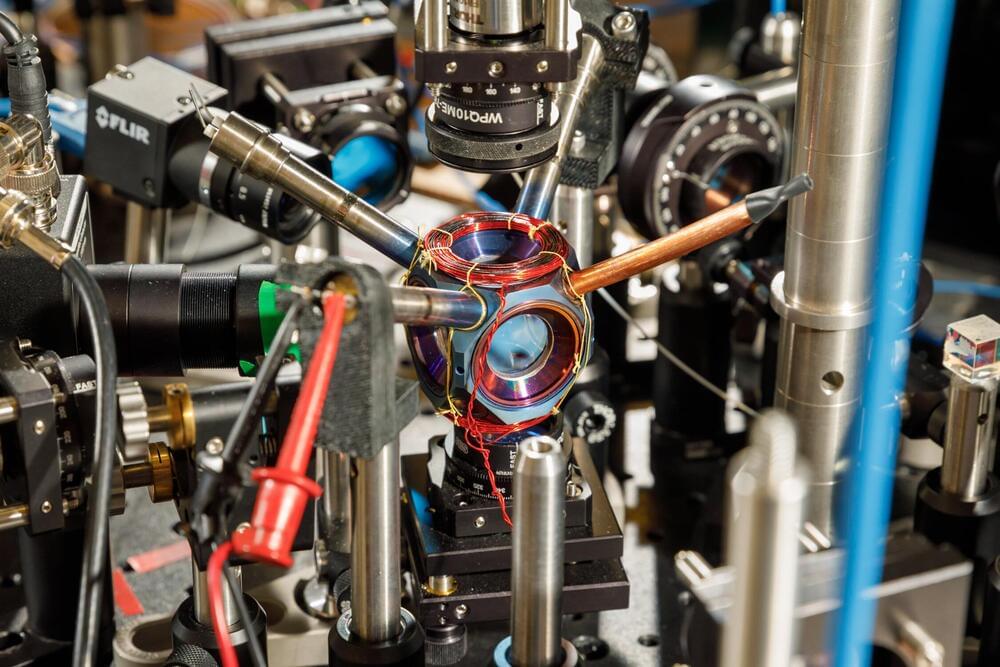The COVID-19 crisis led to fundamental changes in how we conduct business. The big question today is whether these innovations will be sustained and built upon after the crisis.



Don’t let the titanium metal walls or the sapphire windows fool you. It’s what’s on the inside of this small, curious device that could someday kick off a new era of navigation.
For over a year, the avocado-sized vacuum chamber has contained a cloud of atoms at the right conditions for precise navigational measurements. It is the first device that is small, energy-efficient and reliable enough to potentially move quantum sensors—sensors that use quantum mechanics to outperform conventional technologies—from the lab into commercial use, said Sandia National Laboratories scientist Peter Schwindt.
Sandia developed the chamber as a core technology for future navigation systems that don’t rely on GPS satellites, he said. It was described earlier this year in the journal AVS Quantum Science.

You might know that the size of the pupils in our eyes changes depending on how well lit our environment is, but there’s more to the story: Scientists have now discovered that the pupil also shifts in size depending on how many objects we’re observing.
The more objects in a scene, the bigger the pupil grows, as if to better accommodate everything that it has to look at. This “perceived numerosity” is a simple and automatic reflex, the new research shows.
In a new study, researchers observed the pupil sizes of 16 participants while they looked at pictures of dots. In some of the pictures, the dots were linked together in dumbbell shapes – creating the illusion that there were fewer objects – and pupil size then shrank.

Growing veggies on a thin film that allows nutrients and water to pass through while blocking viruses and bacteria.
[Skip Intro] 0:46
Watch more full episodes of Japan’s Top Inventions on NHK WORLD-JAPAN!
https://www3.nhk.or.jp/nhkworld/en/ondemand/program/video/to…-jti034-hp.
More quality content available on NHK WORLD-JAPAN!
https://www3.nhk.or.jp/nhkworld/en/ondemand/video/?cid=wohk-yt-2108-jti034-hp.
A Japanese farming technique using film shows potential for crop cultivation in arid regions and areas affected by soil degradation.

Circa 2020 o.o Basically a molecular printer could make your own vaccine for any disease.
Tesla Inc is building mobile molecule printers to help make the potential COVID-19 vaccine being developed by CureVac in Germany, the electric-car maker’s Chief Executive Officer, Elon Musk, tweeted on Wednesday.

Dr. Ann Marie Kimball (https://epi.washington.edu/faculty/kimball-ann-marie/) is a physician, epidemiologist and currently holds the roles of Associate Fellow at the international affairs think tank Chatham House, and Vice Chair, COVID 19 task force, at The Rotary Foundation / Rotary International.
Previously, Dr. Kimball served as a strategic advisor to the Rockefeller Foundation, supporting the strengthening and development of strategies for Ebola, post-Ebola, and health crisis response, including planning and guiding the formation of a regional disease surveillance network in collaboration with Connecting Organizations for Regional Disease Surveillance (CORDS).
Before joining the Rockefeller Foundation, Dr. Kimball served as technical and strategic lead for the Bill and Melinda Gates Foundation surveillance strategy formation.
Prior to Gates, Dr. Kimball served as Professor of Epidemiology for the University of Washington (UW), School of Public Health, with adjunct appointments in Medicine (Bioinformatics and Infectious Diseases) and the Jackson School of Foreign Affairs. During her tenure at UW, Dr. Kimball founded and directed the APEC Emerging Infections Network, and led research and training programs in Surveillance and Informatics in Peru and Thailand.
Dr. Kimball’s research focus on global trade and emerging infections earned her a Fulbright New Century Scholars award and a Guggenheim Scholars award.
Dr. Kimball is also the author of Risky Trade: Infectious Diseases in an Era of Global Trade, which was highly reviewed by NEJM, Emerging Infections and Lancet. She has authored numerous scientific publications, and served on numerous Institute of Medicine panels. She is also a fellow in the American College of Preventive Medicine and member of the National Biosurveillance Advisory group (NBAS) from the Centers for Disease Control.

Wed, Oct 27 at 4 PM PDT.
If you haven’t been to Nunavut, you may not know it’s home to a vast variety of flowering plants, lichens, mosses, and more found on the land. Lynn Gillespie, a Canadian Museum of Nature botanist, has built a career studying Arctic botany. Lynn will be on Facebook LIVE on October 27th discussing plants you can find in Nunavut, what it’s like to conduct field research in the Arctic, and answering your questions. This interview will be facilitated by Joni Karoo, SOI Arctic 2019 alum from Taloyoak, Nunavut!
*This interview will be held in English*.
